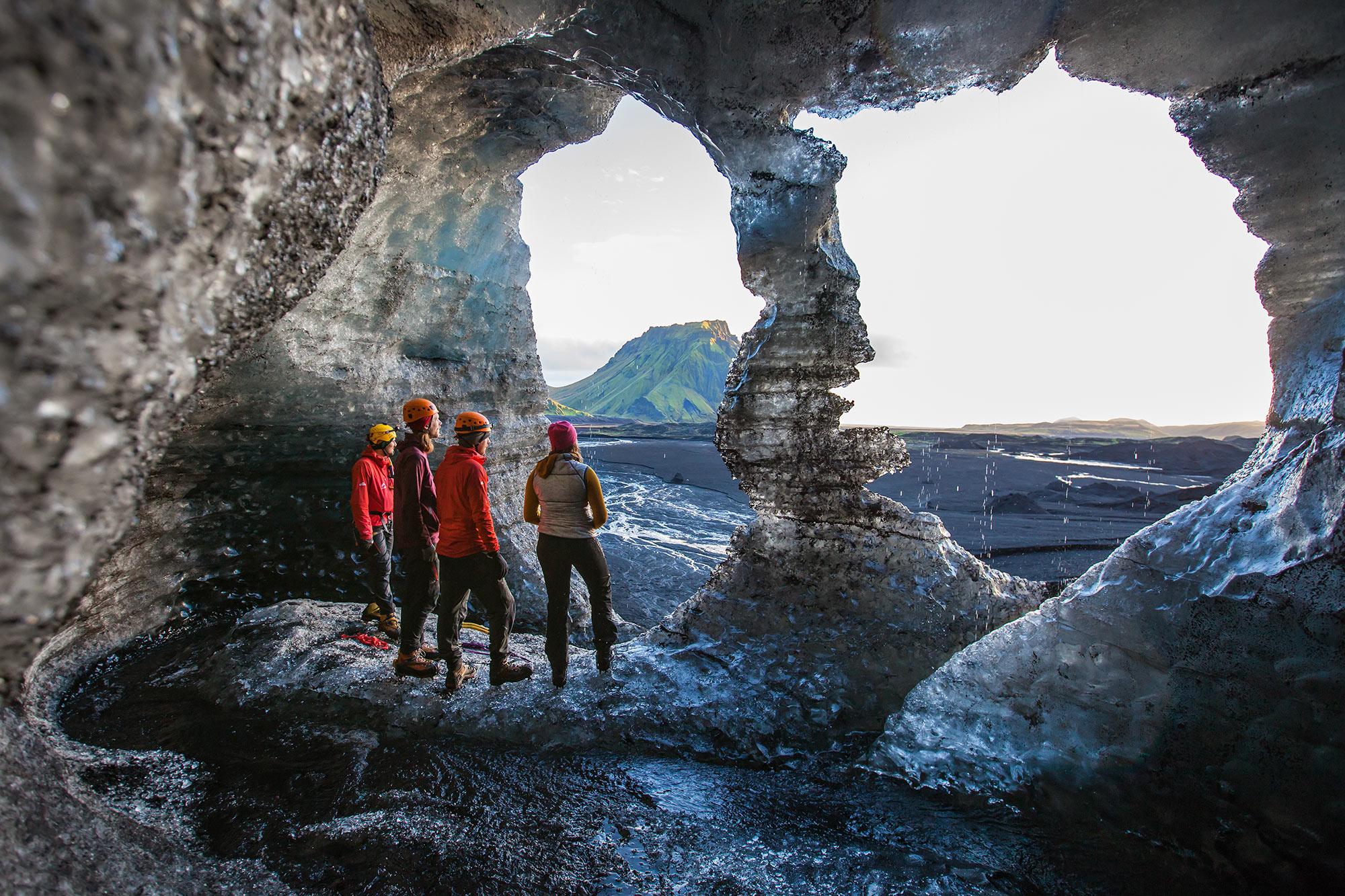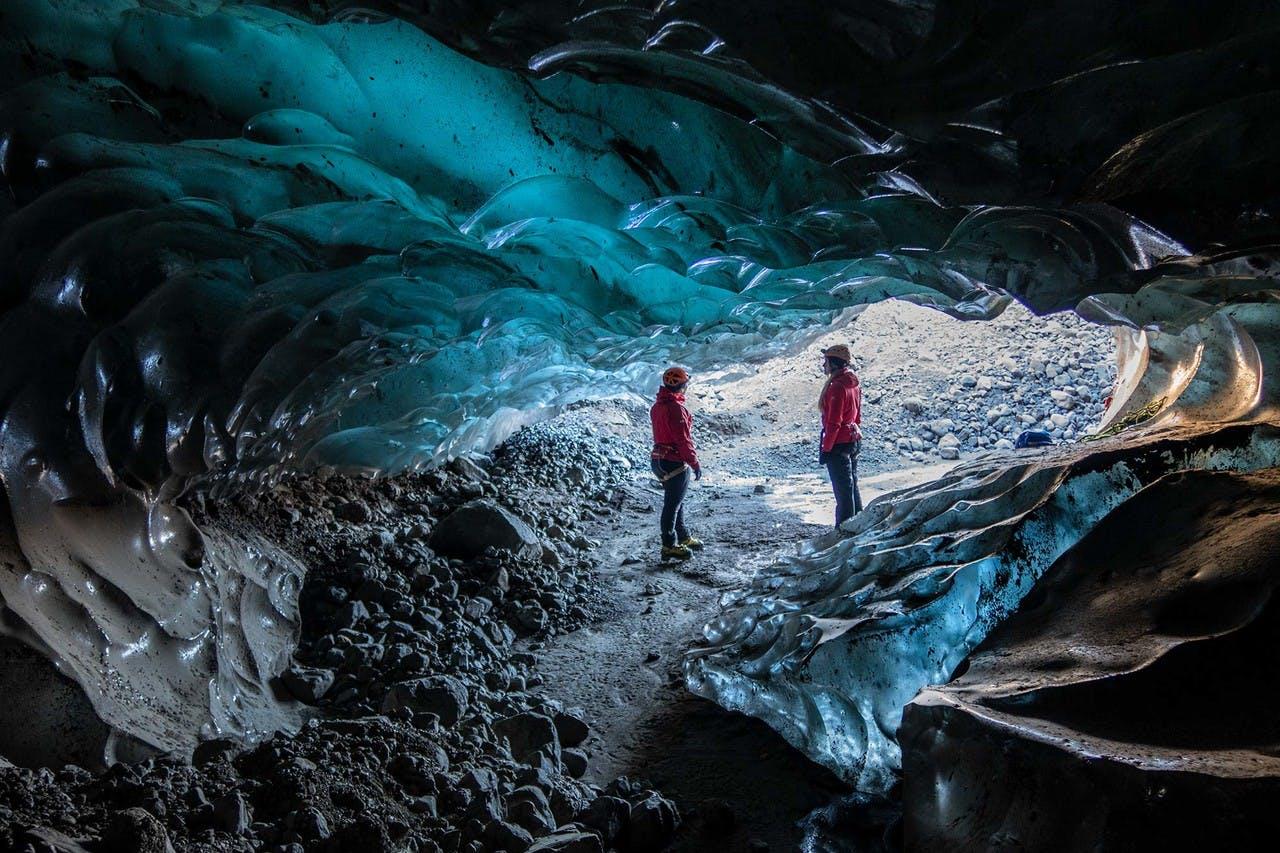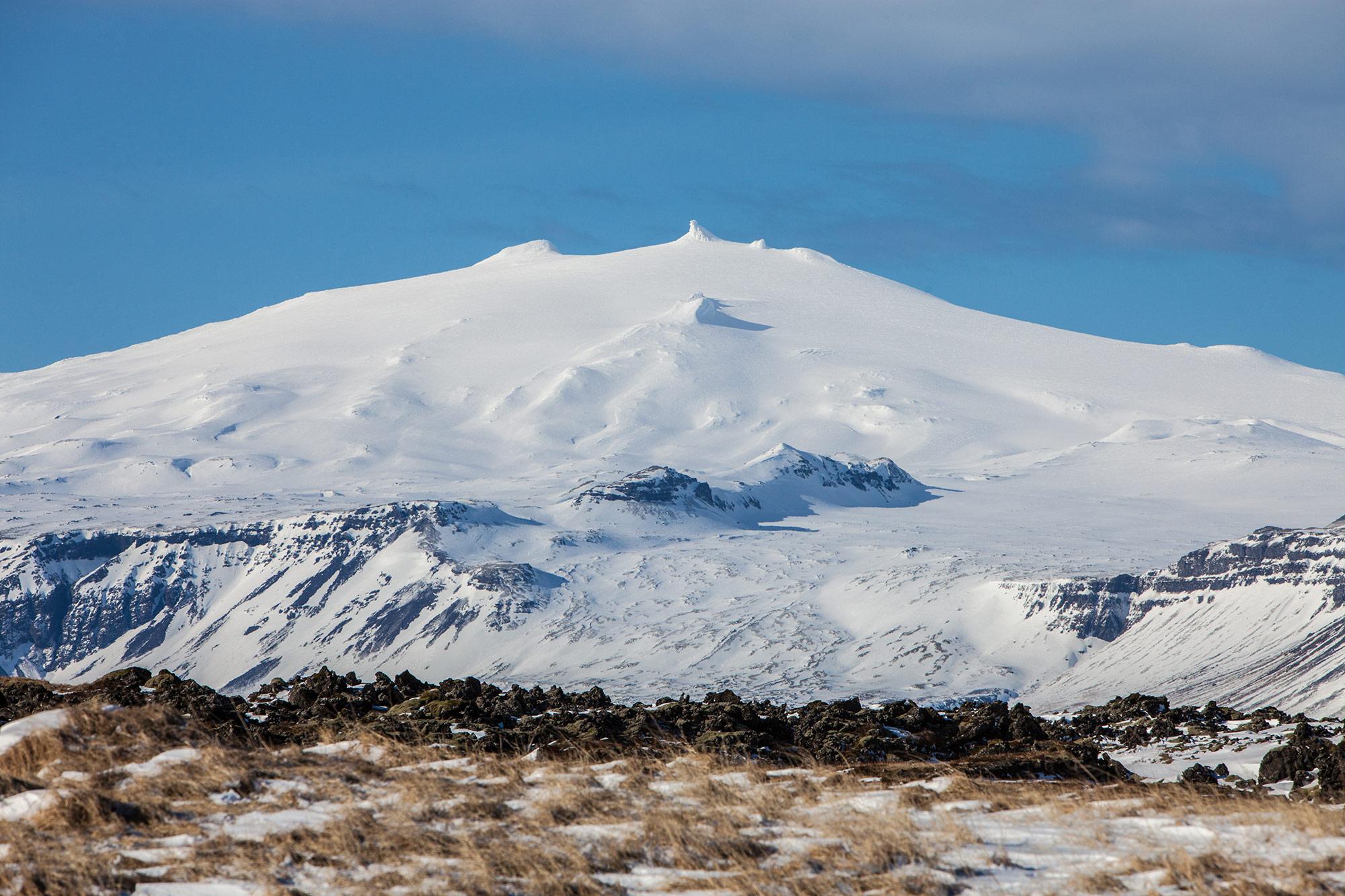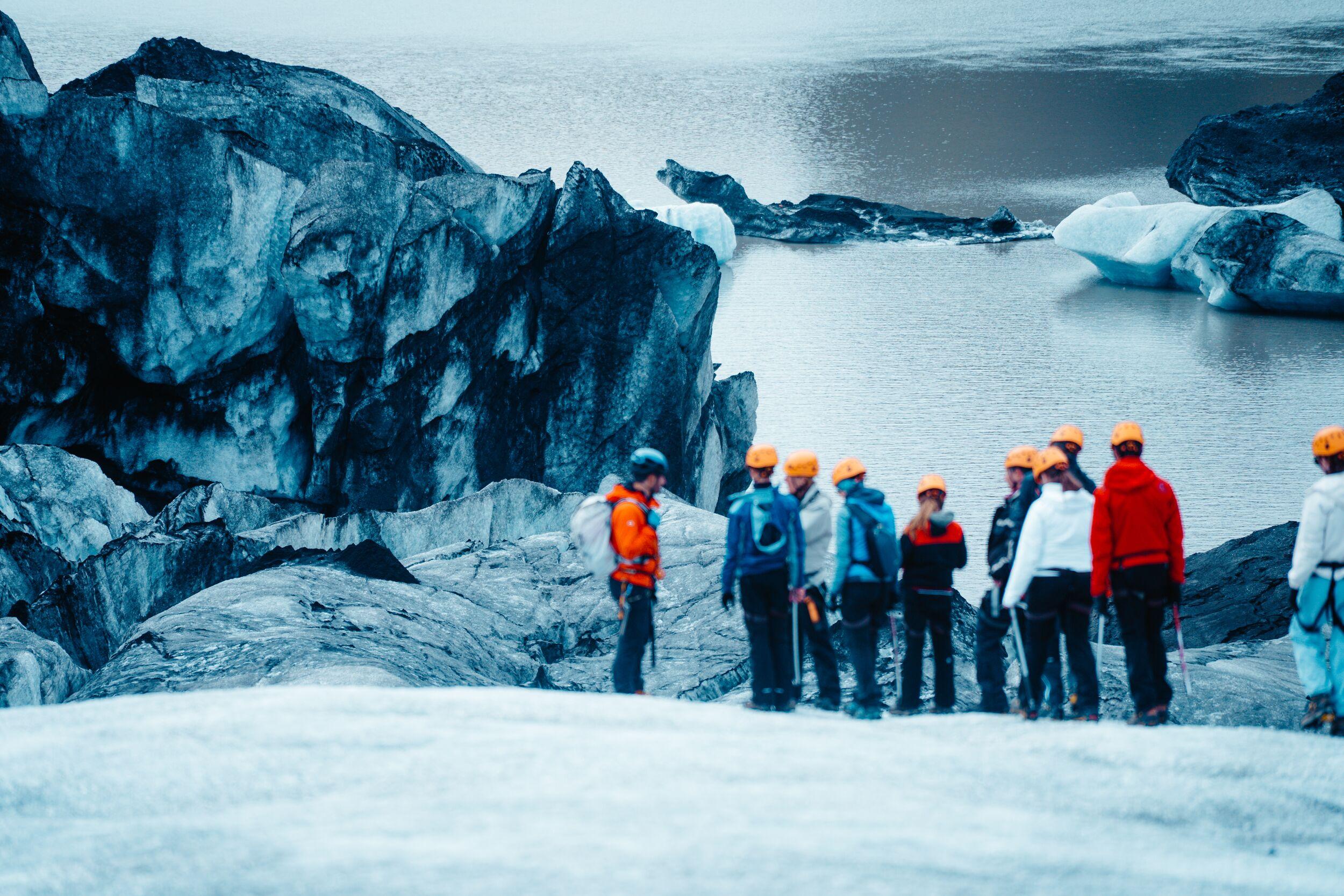Ice Cave Tour Iceland - What to Expect
| All, glaciers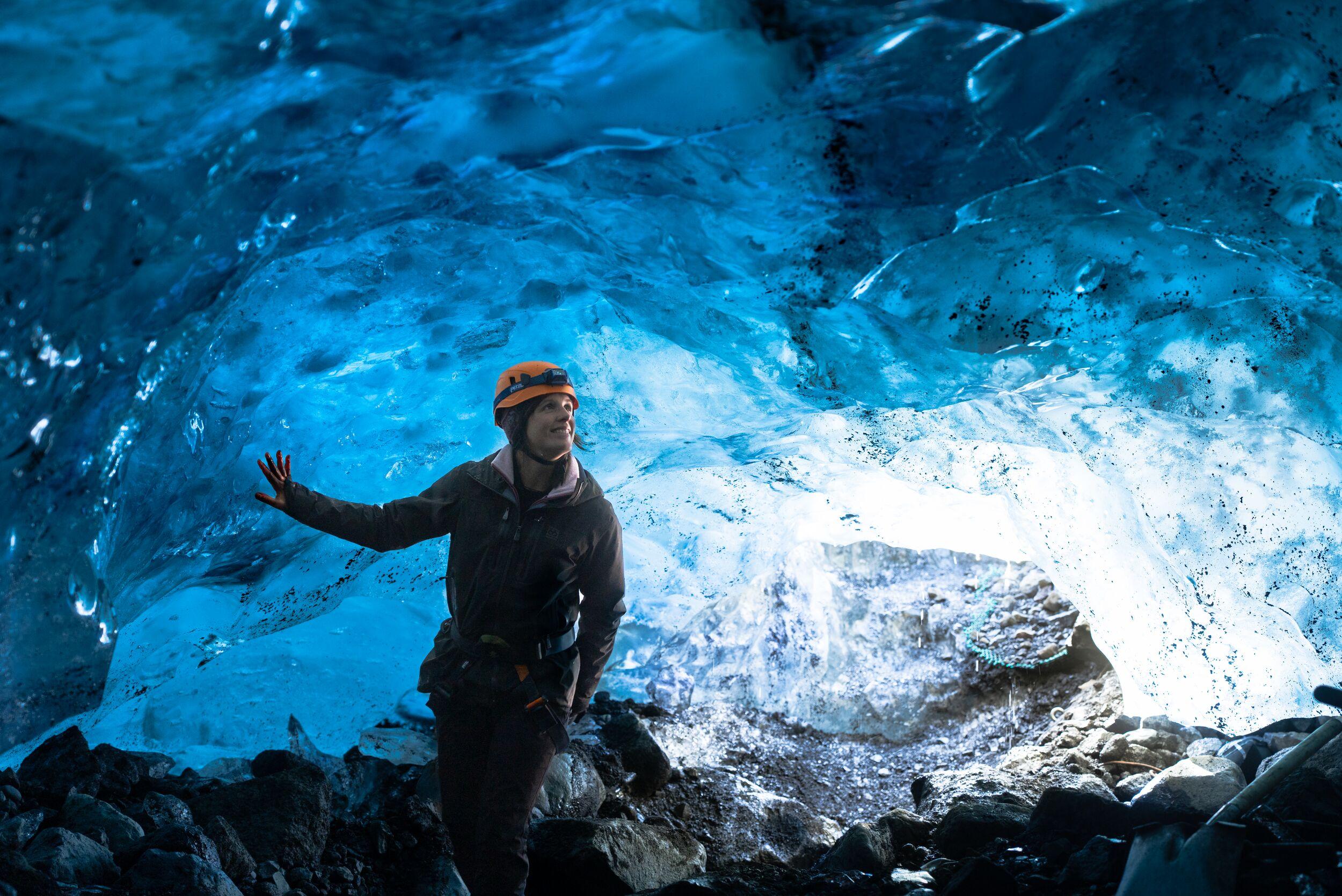
Your Guide To Exploring Iceland’s Ice Caves
Imagine ducking into a narrow, blue-lit tunnel where the world goes quiet except for the gentle drip, drip, drip of meltwater. Light filters through ancient ice, casting sapphire hues across rippled walls. You’re walking inside a glacier — a moment so rare it feels like you’ve awoken on another planet.
Thanks to its geographic location and abundance of glaciers, Iceland is the only place on Earth where these magical ice caves appear naturally on such a dramatic scale. Each winter, new chambers form and old ones vanish, making every ice cave tour in Iceland a one-of-a-kind adventure.
But before you venture into the belly of Iceland’s icy giants, there are a few things you need to know, from how glaciers and ice caves are formed to safety precautions and why exploring ice caves with Icelandic Mountain Guides is the way to go. Read on.
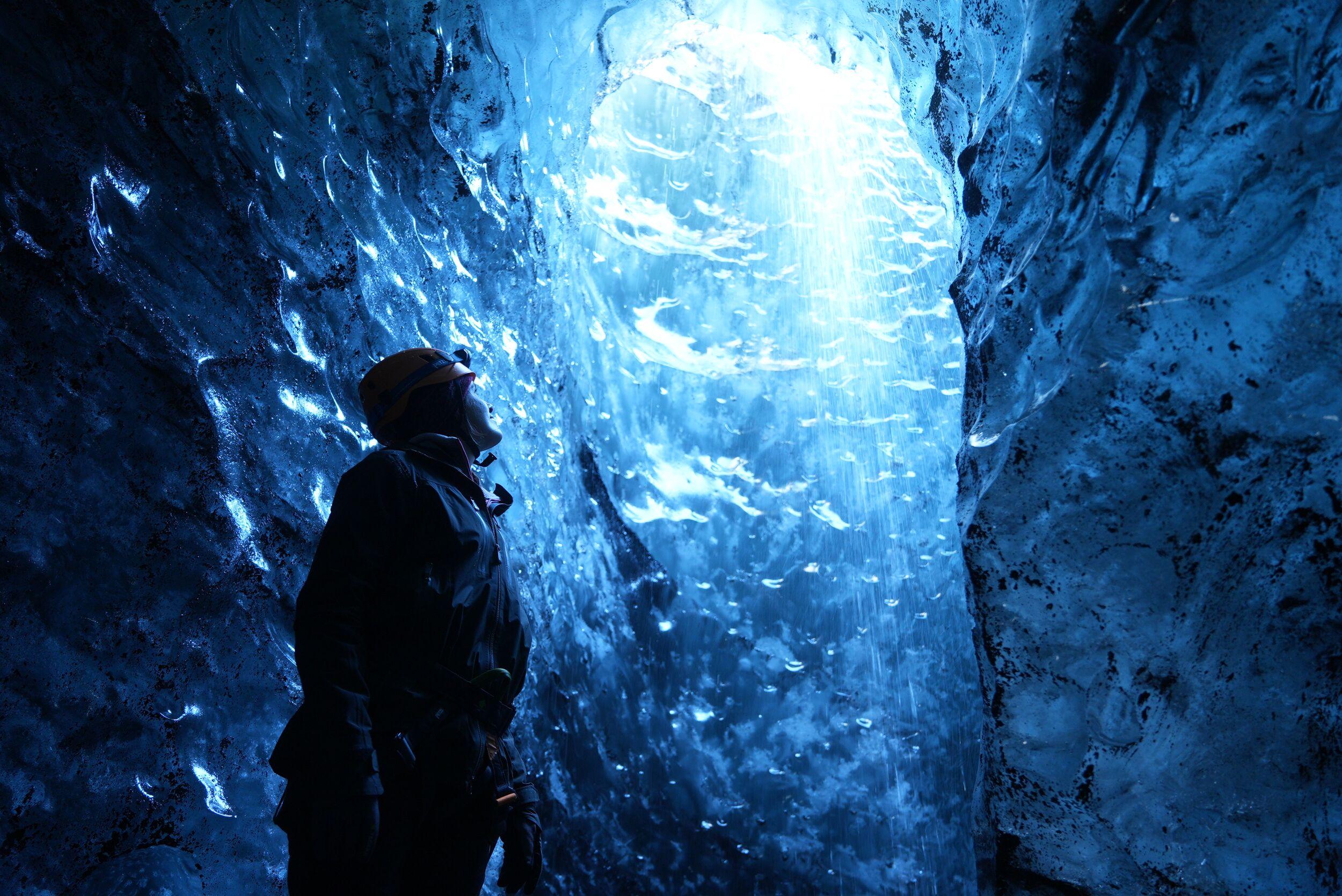
A Land Sculpted by Ice
Glaciers are Iceland’s slow-moving titans — immense rivers of compressed snow flowing from the highlands to the sea. Covering about 11% of the island, they’re living time capsules holding bubbles of ancient air, ash from long-ago volcanic eruptions and records of climate fluctuations over centuries.
Iceland’s glacial crown jewel, Vatnajökull, sprawls over 8,000 square kilometers — in fact, it’s Europe’s largest ice mass. Other stars of the show include Langjökull, Mýrdalsjökull, Hofsjökull and Snæfellsjökull, each with its own personality and allure. These glaciers shift and grind with the seasons, sometimes even giving rise to the fleeting natural cathedrals we call ice caves.
How Ice Caves Are Born — and Why They’re Never the Same Twice
Unlike rock caves carved over millennia, ice caves are sculpted over the course of weeks or months. Summer meltwater streams flow under and through the glacial ice, carving tunnels and chambers as it makes its way to the edges of the icy masses. When winter locks everything into deep freeze, some of these tunnels become stable enough to explore.
Each autumn brings a brand-new layout — vaulted ceilings, twisting passageways, smooth domes, even eerie shafts of light piercing the ice. No ice cave stays the same for long. The transience is part of the magic: an ice cave you visit this year will be gone or utterly changed next year.
This constant change is the top reason to only explore Iceland’s ice caves with the experts at Icelandic Mountain Guides.
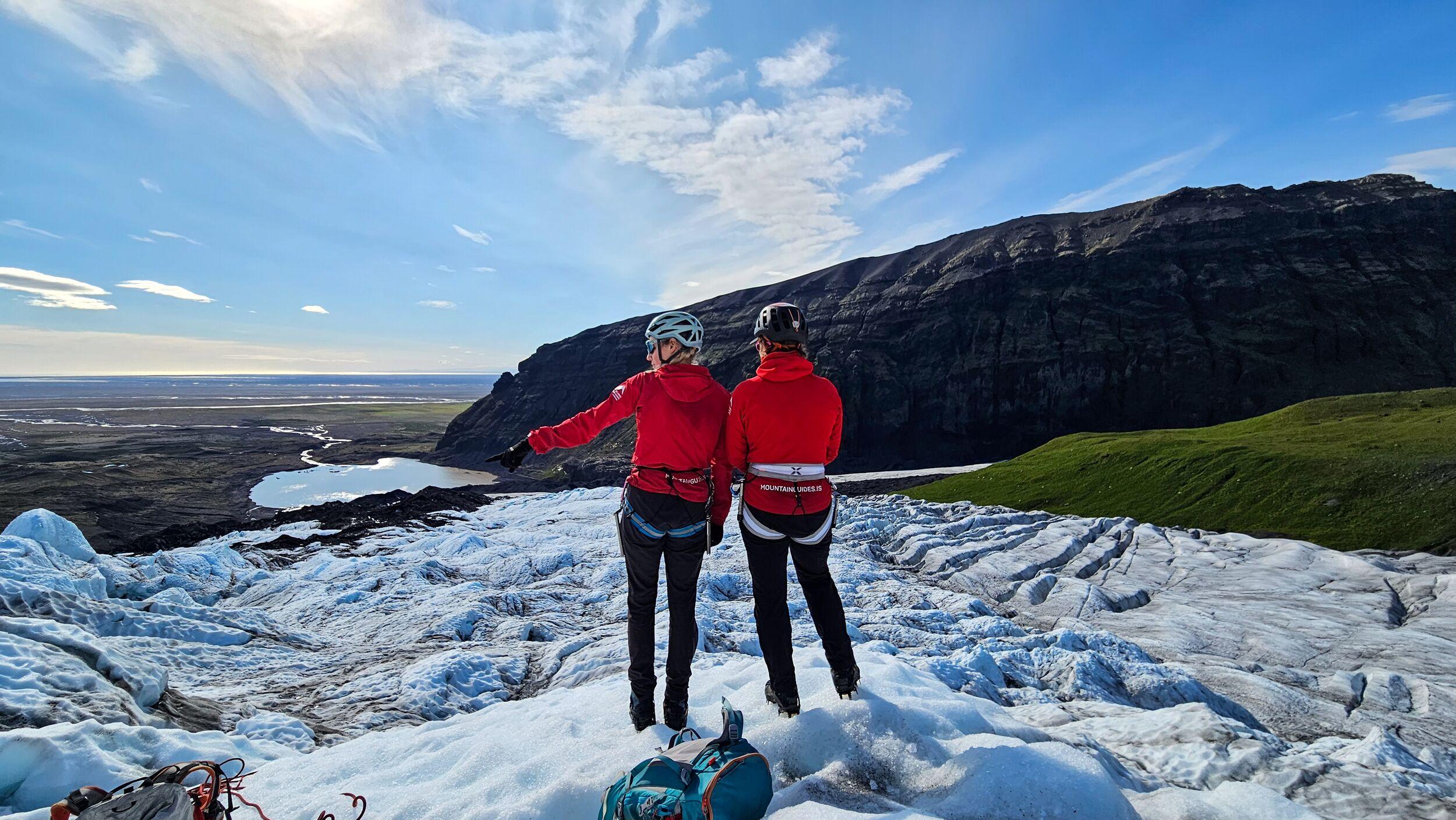
Inside the Ice: What to Expect on Your First Ice Cave Tour in Iceland
A Cathedral of Light and Layers
Step inside and you’ll see ancient snow compressed into glassy blue ice that appears to shimmer and glow as daylight filters through its layers. Some caves are tight and intimate, others open into grandiose halls that swallow sound. Look closely at the bands in the ice — those stripes tell stories of past winters, volcanic ash layers and even pockets of trapped air older than any human settlement in Iceland.
Glaciers hold bubbles of ancient atmosphere, like tiny time capsules literally frozen in time. While these gases rarely pose a danger to visitors, professionals monitor ice caves for stability and ventilation, especially near geothermal areas where natural gases can accumulate. This constant vigilance ensures you’re exploring a wonder, not a hazard.
Safety Above All
An ice cave may feel still, but it’s alive. Cracks, meltwater and shifting ice are all part of its character. That’s why no one should enter an ice cave without a trained guide. Icelandic Mountain Guides’ team are glacier specialists with decades of experience, providing:
Seasonal Access: October–April is prime time for natural ice caves.
Protective Gear: Helmets, crampons, harnesses and other equipment is included in our glacier tours.
Daily Inspections: Guides are consistently checking every cave for ice stability, meltwater and potential gases.
Emergency Preparedness: Radios, rescue plans, and safety drills are standard.
You simply bring your warm layers, waterproof jacket, sturdy boots — and your sense of awe.
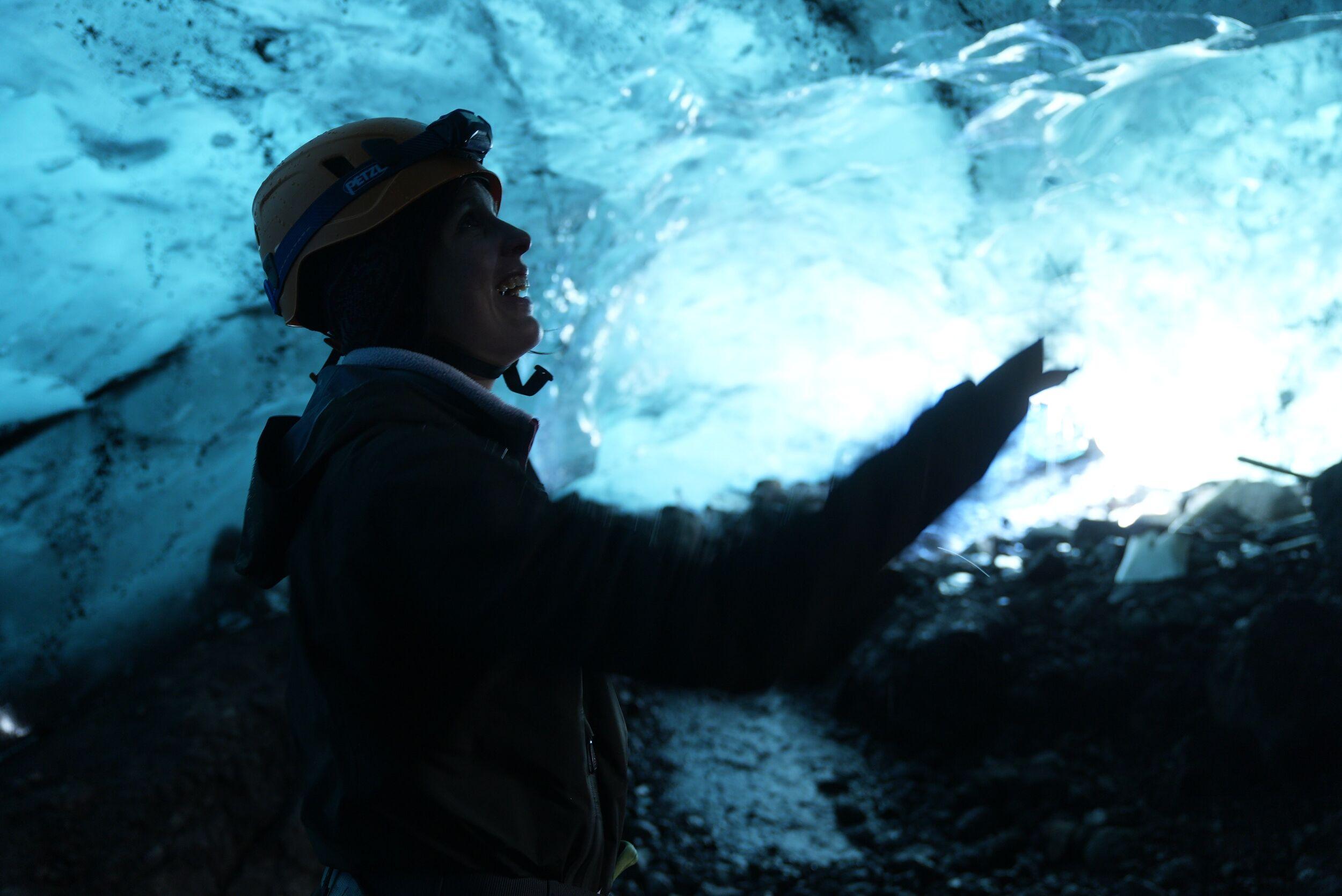
Icelandic Mountain Guides Ice Cave Tours
From easy access tours to full-day expeditions, Icelandic Mountain Guides’ ice cave adventures give you front-row access to Iceland’s frozen cathedrals.
One of our slightly less demanding tours, but just as visually stunning, the Skaftafell Ice Cave Tour & Glacier Hike allows you to explore the surface of the glacier and its naturally forming ice caves in Vatnajökull National Park. As your guide leads you on to the icy landscape for your glacier walk, you will learn about how they are formed. While in the ice caves, you will have plenty of time to take pictures of the breathtaking surroundings. The melting ice, vivid blue color and tranquility inside of the cave are what make these features of the glacier so spectacular.
Each tour blends education, adventure and impeccable safety — the perfect recipe for first-time explorers or seasoned adventurers alike.
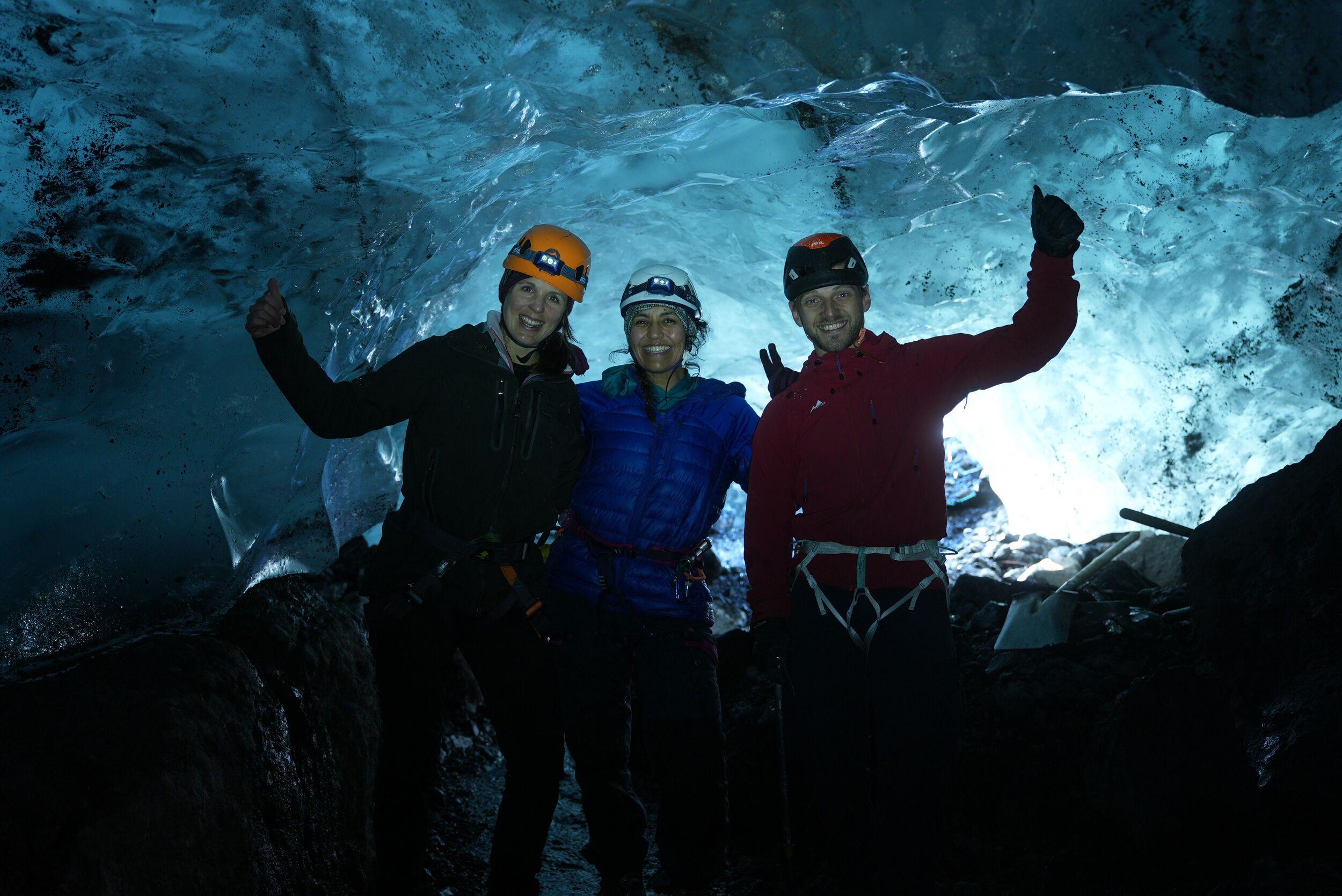
Why an Ice Cave Tour in Iceland Belongs on Your Bucket List
Few experiences match the thrill of entering a world so fragile, so luminous and so transient. Whether you seek thrills, chills or the serenity of nature, trekking atop a glacier and exploring the secret and ever-changing depths hidden within the ice will give you what you’re looking for. And Icelandic Mountain Guides is prepared, passionate and ready to make it an unforgettable experience for you and your travel partners.
Book your ice cave tour in Iceland here and step into the shimmering heart of a glacier before it melts away.
FAQ
When is the ice cave season in Iceland and what affects availability?
The natural ice cave season generally runs during the colder months — roughly from October/November through March/April — when temperatures are low enough and daylight short enough for ice caves to form and remain stable.
Availability depends heavily on:
Weather and temperature: warm spells, melting, heavy rain reduce stability.
Glacier dynamics: movement, meltwater channeling, cracks, instability in the ice.
Safety assessments: guides must inspect caves regularly and decide whether they are safe enough to open.
Road access and terrain: heavy snow, road closures, or dangerous driving conditions may prevent transport.
How do we get to the ice cave; what transportation and terrain should I expect?
Glacier and ice cave tours often include special vehicles, such as 4×4 trucks, mountain trucks or buggies, to handle the glacier conditions.
You should expect to be walking on snow, ice, glacier foreland, or rocky moraines to reach the ice cave entrances. Terrain can be uneven, slippery and sometimes steep, so sturdy hiking boots are a must.
Expect some transfer time from your tour’s specified pick-up point, as well as driving on gravel or glacier roads.
What kind of safety briefing and gear will IMG provide before entering?
Icelandic Mountain Guides takes the safety and security of its guests seriously. As such, we are constantly inspecting and monitoring the conditions of the trails and ice caves to which we bring tour groups.
Prior venturing onto the glacier or into an ice cave, a full safety briefing will cover:
- How to walk safely on ice and the use of crampons
- What to do in case of ice falling
- How to move through the cave safely
- Guidance on staying with the group, what parts are allowed/forbidden.
Gear supplied for glacier and ice cave tours typically includes:
- Helmet
- Crampons (to attach to your own hiking boots)
- Possibly harnesses or other safety equipment if required
- Walking poles or ice axes if needed
What are the typical conditions like inside an ice cave (temperature, structure)?
Temperatures inside an ice cave typically hover around or below freezing (0 °C / 32 °F), but they can often be colder than that. Contributing to the cold is possible damp within the cave and wind when entering or exiting. Cold air tends to hang in low spots.
As for the structure of ice caves, you can expect chambers with vaulted or domed ceilings, as well as tunnels or passageways of ice. Surfaces may be slick, with some parts icy smooth and others jagged or rough. Light filtering through ice can lend the caves a blue or turquoise glow.
Can an ice cave tour be cancelled last-minute; what are my options if it is?
Yes, last-minute cancellations are possible due to safety concerns. Icelandic Mountain Guides is constantly monitoring ice caves for potential instability. Bad weather and dangerous driving can also contribute to possible cancellations.
If your tour is cancelled, be in contact with Icelandic Mountain Guides to discuss rescheduling to another day or time, booking an alternative tour, or securing a refund.
How long do you spend inside the ice cave during a typical IMG tour?
Tour durations are listed on the booking pages of all our tours. You can expect anywhere from 30 to 60 minutes inside an ice cave, giving you ample time for exploration and epic photo ops.
What should I wear and bring for comfort and safety inside an ice cave?
As with any activity you embark upon while in Iceland, dressing in layers is absolutely key.
- A synthetic or wool base layer to wick moisture away from your skin.
- An insulting middle insulating layer (fleece or down are good choices).
- A water- and wind-proof outer layer.
- Warm gloves and a hat/beanie that fits under a helmet.
- Sturdy waterproof hiking boots that crampons can be fitted to.
- Thick socks.
Optional but useful:
- Hand warmers.
- Sunglasses and sunscreen.
- A small backpack for extra layers, snacks, water, any camera gear.
How does IMG ensure group safety in ever-changing ice conditions?
Icelandic Mountain Guides engages in constant monitoring and evaluation of the ice caves we operate in. Guides examine for signs of instability, cracks, meltwater flow and overhead ice that could fall. Our experienced and certified glacier guides are experts in their fields.
Is this experience suitable for first-timers, families, or those with mobility needs?
Many tours are designed for people with limited or no experience, though you will need to be able to walk distances in most cases. Contact us for specific details if you have mobility concerns.
Welcoming families on our tours is often possible, though minimum age limits may apply — these are clearly listed on all tour web pages.
How cold is it inside an ice cave?
Temperatures are generally around freezing (0 °C / 32 °F), but often a few degrees below, especially deeper inside or when outside air is cold.
Depending on the cave, season, and how protected the cave is from wind and meltwater, it can feel significantly colder (wind, moisture amplify cold).
Keep me informed about the Icelandic Mountain Guides Blog
Outdoor adventure in Iceland is our specialty. Subscribe to our free monthly newsletter to learn when to go, what to do and where to have the best adventures in Iceland.
Related Blog Posts
Related Tours
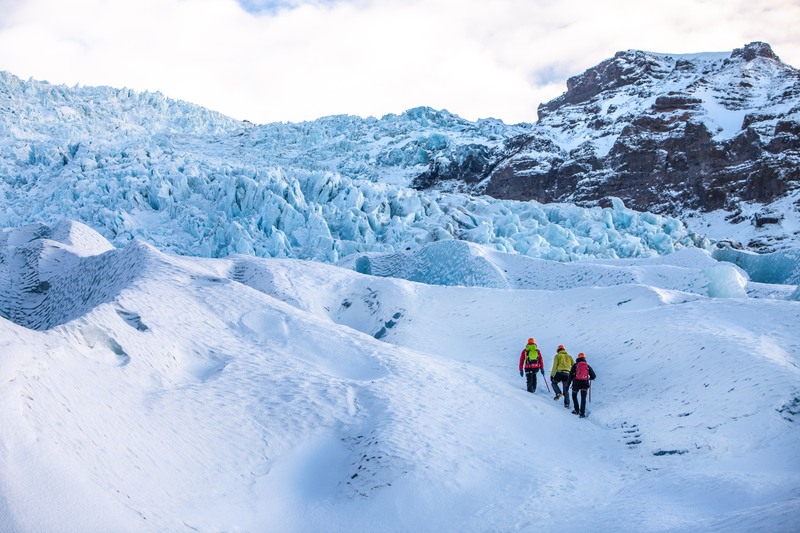
Skaftafell Ice Cave Tour & Glacier Hike
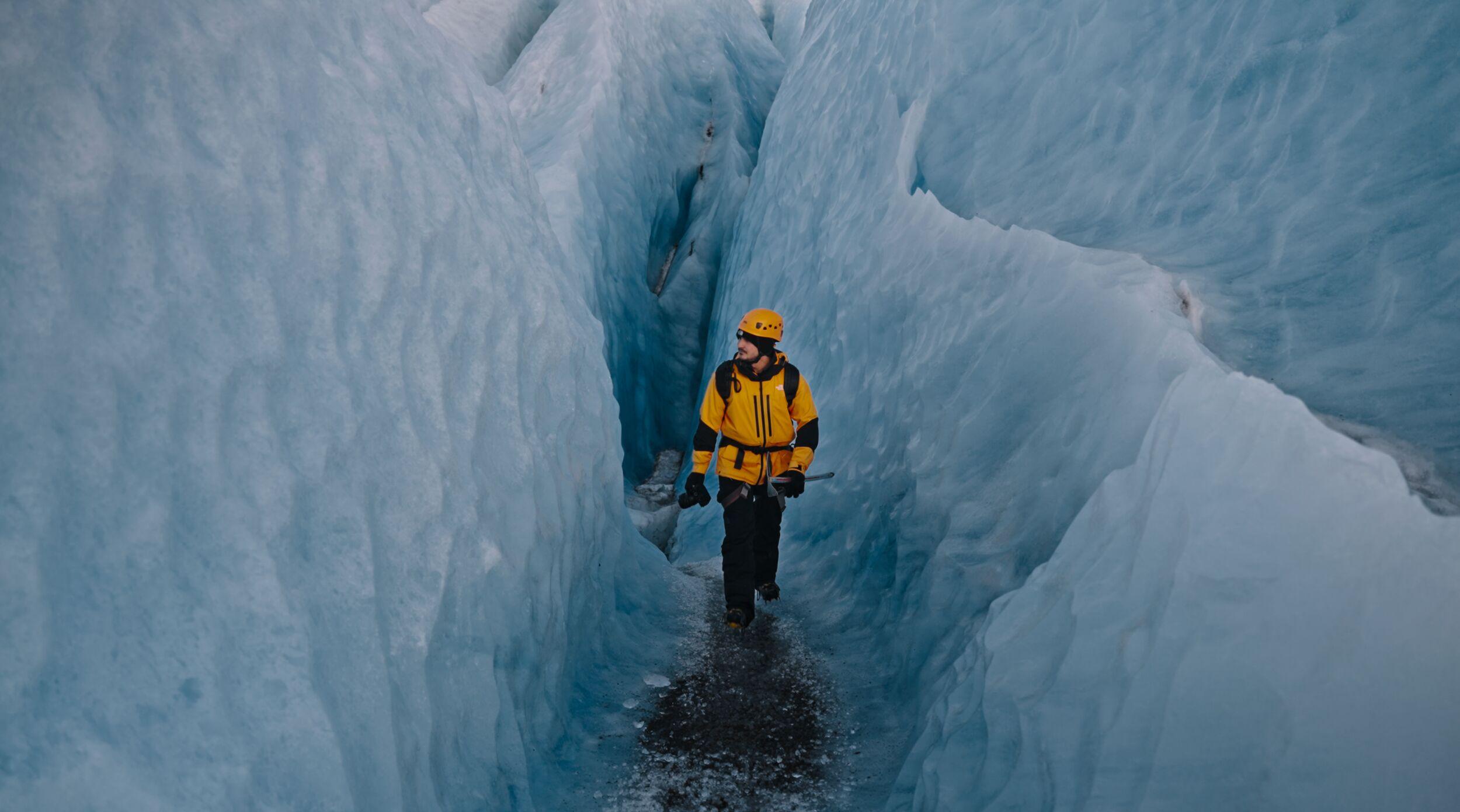
Blue Ice Experience - 3.5-hour Skaftafell Glacier Hike
